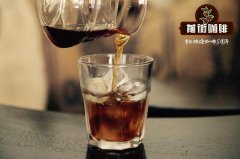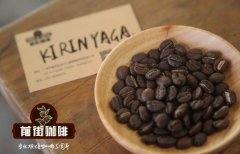African drying bed insolation method of Humbela Huakui Spring Micro-treatment batch

Professional coffee knowledge exchange more coffee bean information please follow the coffee workshop (Wechat official account cafe_style)
New 2018 new production season Essehuakui 2.0, from Hambella core production area, Shanquan treatment plant micro-batch
At present, there are about 20 processing plants of various sizes in Hambella producing areas.
As a coffee company "rooted" in the Ethiopian coffee producing area, Ethiopia has set up four sun treatment plants in a cooperative manner in the GUJI Hambella producing area since 2016.
A series of sun treatment methods were studied by using the high quality coffee varieties of this area in the production season of 17x18.
There are four manor processing plants in the core production area of Hambella, namely, "Dire" church treatment plant, "mansa" mountain pond treatment plant, "Bobea" red flag treatment plant and "Goro baessa" mountain spring treatment plant.
Goro baessa is a small village surrounded by mountains at an altitude of 2280 meters. December is its coffee harvest season every year.
At this time, the mountains are full of red and mature coffee cherry, and the villages are neatly arranged on African tanning beds, which is where "Sakuran" deals with.
How did Sakuran's name come from?
In 2017, Ethiopia's DW Raw Bean Company sent their coffee beans to TOH (the Taste Of Harvest), a competition hosted by the African Coffee Association.
Sunburn batch won the TOH Ethiopia championship in one fell swoop. This batch of raw beans, in the capacity of the champion, is named "Sakuran".
Sakuran, located in Hambella, Humbera is in GUJI, the largest coffee producing area in Ethiopia, and the administration belongs to the state of Oromia.
The west of Hambella is across the mountain from kochore, and the east and south are connected with the shakiso,Uraga and Kerchaz producing areas of Guji respectively.
It is the highest coffee producing area in Ethiopia (Harrar is the highest main coffee producing area in Ethiopia).
Treatment mode
Most of the coffee farms in Ethiopia are still in their native state, and the local farmers just go to the mountains to pick them.
Red brown organic soil, annual rainfall more than 1200mm, altitude, day-night temperature difference, Sakuran only choose all red fruits, fully ripe coffee cherries, all manual picking
African scaffolding drying, limiting the thickness of the fruit layer and turning regularly for 24 hours, the manor has a unique natural environment for low-temperature fermentation.
In the harvest and treatment season (December-January), its unique growth environment and natural climate created the unique flavor of Huakui.
The sugar content of the red fructose we are picking is more than 30 before we start sun treatment.
In the first two days of the sun, it is necessary to ensure the humidity of the red fruit so that its fructose fully begins to ferment.
At the same time, the high-altitude geographical location, so that the night temperature of the treatment plant can be reduced to about 12 degrees Celsius, and will not produce the smell of excessive fermentation because the temperature is too high.
When the temperature is relatively high at noon, we will cover in time to prevent sunburn of red fruit.
END
Important Notice :
前街咖啡 FrontStreet Coffee has moved to new addredd:
FrontStreet Coffee Address: 315,Donghua East Road,GuangZhou
Tel:020 38364473
- Prev

Huakui Coffee Coffee Sidamo Gujigi Bella Sun-treated Coffee beans Story characteristics and Flavor description
Professional coffee knowledge exchange more coffee bean information please follow the coffee workshop (Wechat official account cafe_style) Ethiopian Sidamo Shakisso Natural Sakuran name: Ethiopia Sunshine Sidamo G1 Sakuran Ethiopian Sidamo Shakisso Natural Coffee country: Africa Africa, Ethiopia Ethiopia, Coffee Manor: Guji Gu
- Next

Kenya Kirin Yajia coffee producing area introduces how to drink Kenyan Kirin Yajia coffee?
Professional coffee knowledge exchange more coffee bean information please follow the coffee workshop (Wechat cafe_style) Kenya AA 206Lot Kenya AA 206Lot country: Kenya production area: Kirin Yajia kirinyaga Variety: SL28SL34 treatment: washing altitude: 1500-1900 m Kenya is located in East Africa, right on the equator
Related
- Detailed explanation of Jadeite planting Land in Panamanian Jadeite Manor introduction to the grading system of Jadeite competitive bidding, Red bid, Green bid and Rose Summer
- Story of Coffee planting in Brenka region of Costa Rica Stonehenge Manor anaerobic heavy honey treatment of flavor mouth
- What's on the barrel of Blue Mountain Coffee beans?
- Can American coffee also pull flowers? How to use hot American style to pull out a good-looking pattern?
- Can you make a cold extract with coffee beans? What is the right proportion for cold-extracted coffee formula?
- Indonesian PWN Gold Mandrine Coffee Origin Features Flavor How to Chong? Mandolin coffee is American.
- A brief introduction to the flavor characteristics of Brazilian yellow bourbon coffee beans
- What is the effect of different water quality on the flavor of cold-extracted coffee? What kind of water is best for brewing coffee?
- Why do you think of Rose Summer whenever you mention Panamanian coffee?
- Introduction to the characteristics of authentic blue mountain coffee bean producing areas? What is the CIB Coffee Authority in Jamaica?

